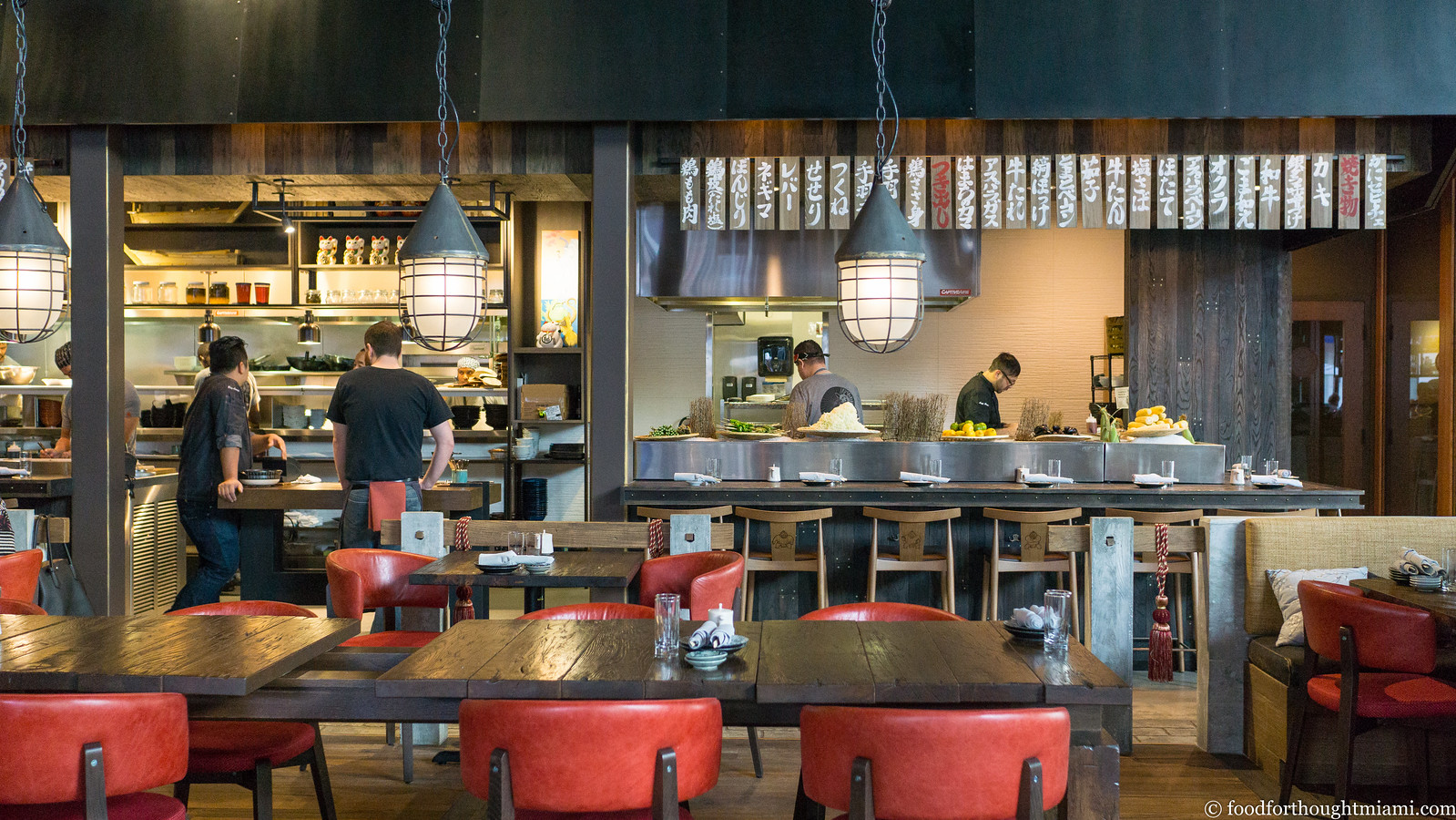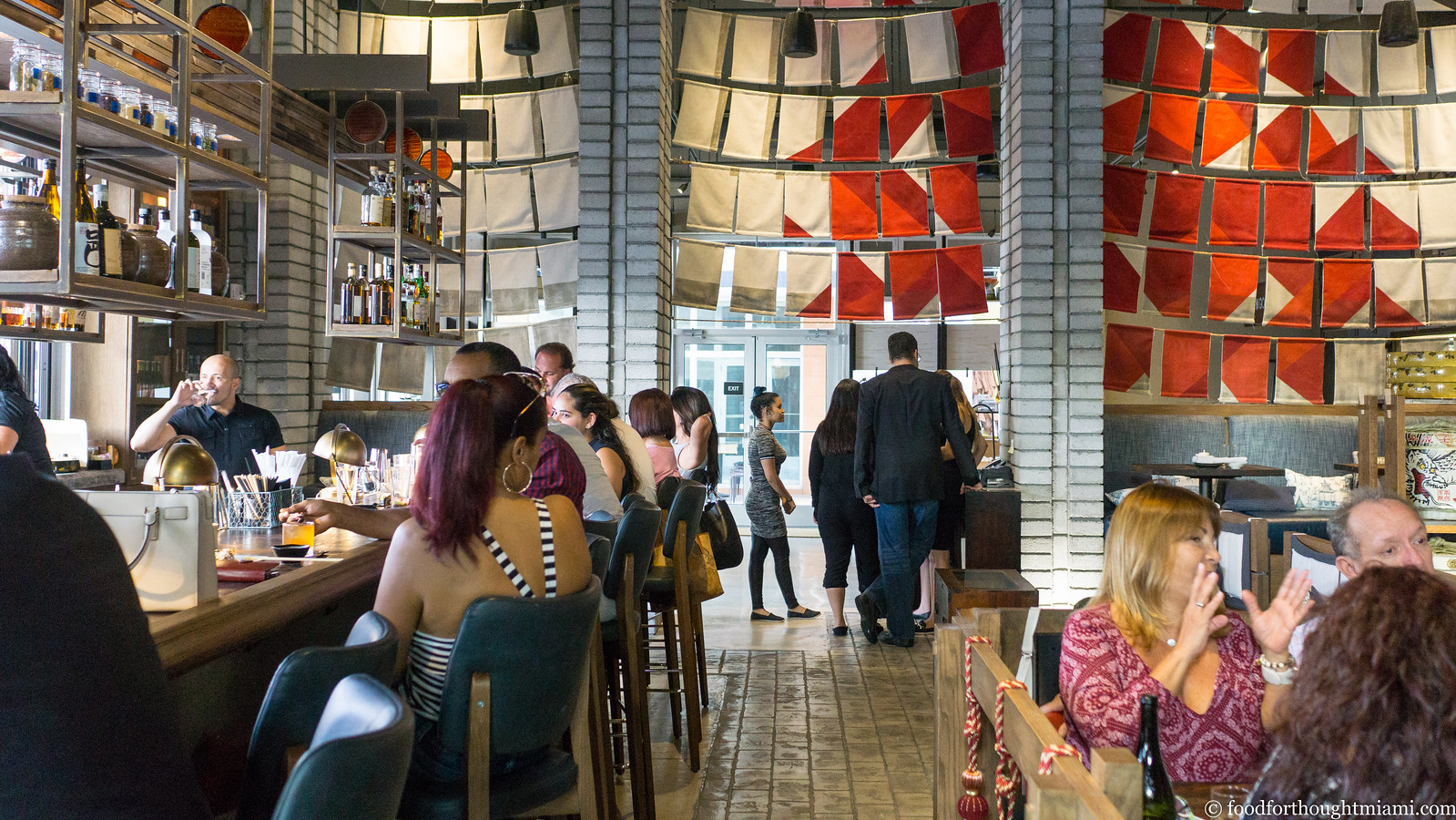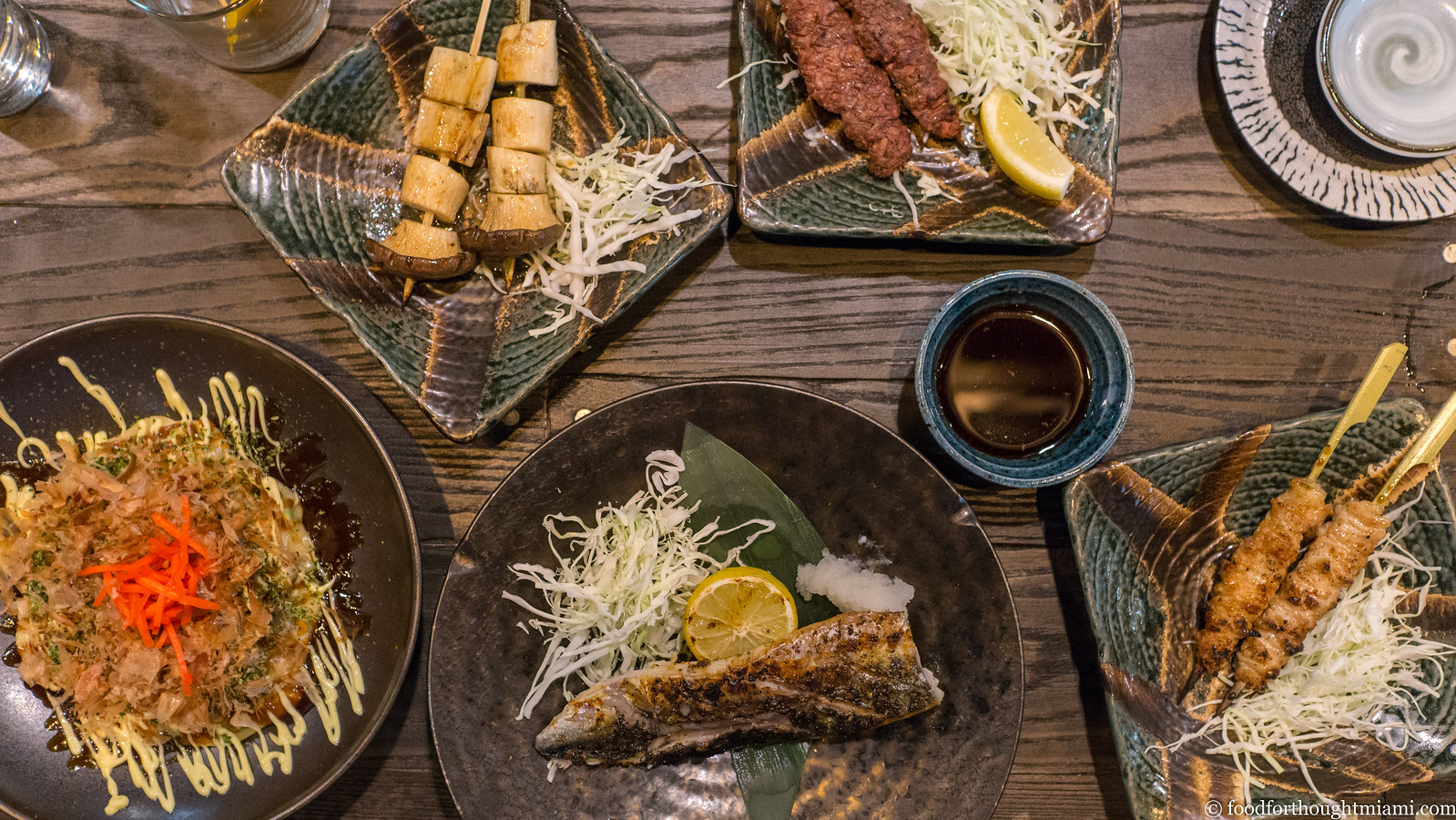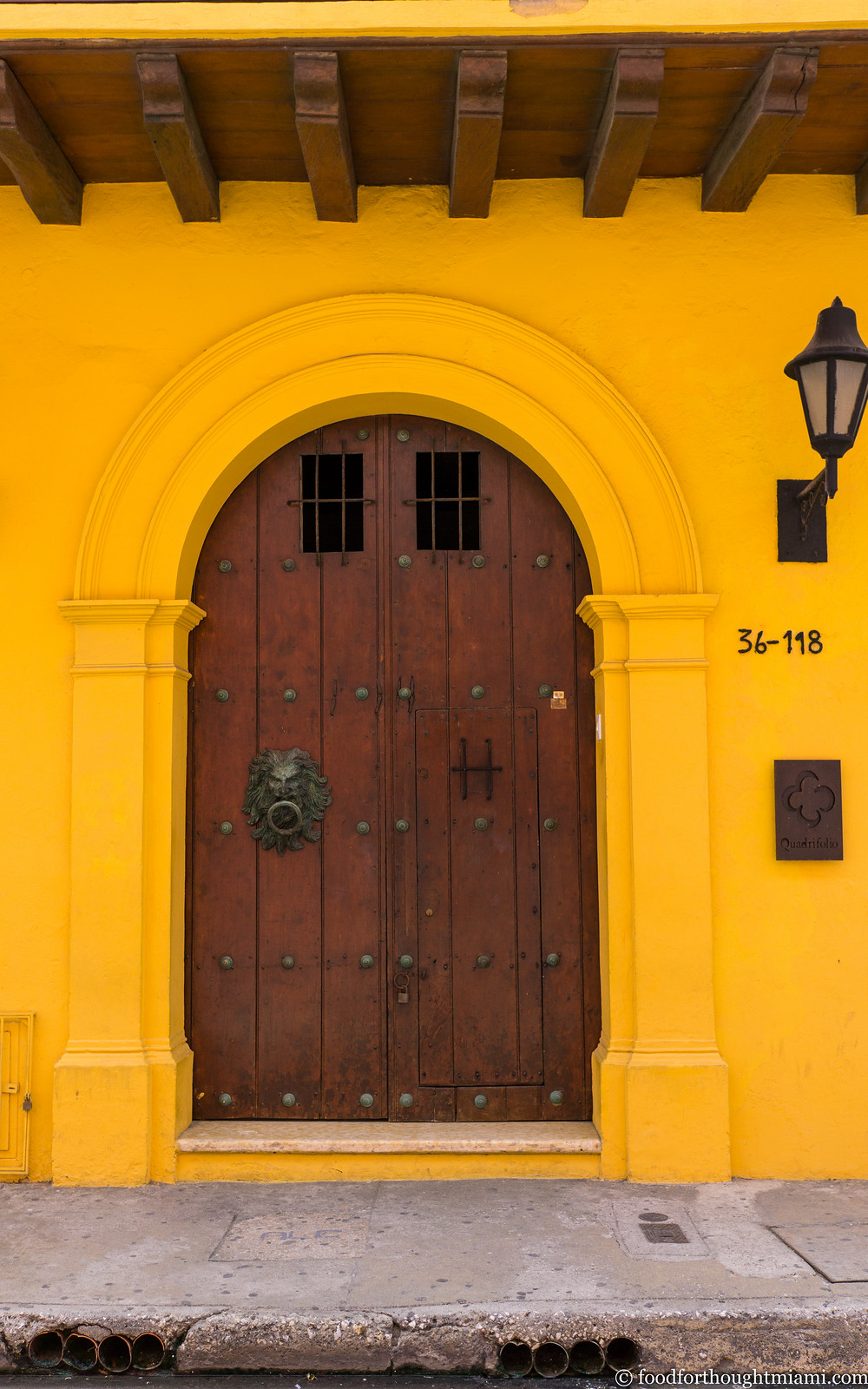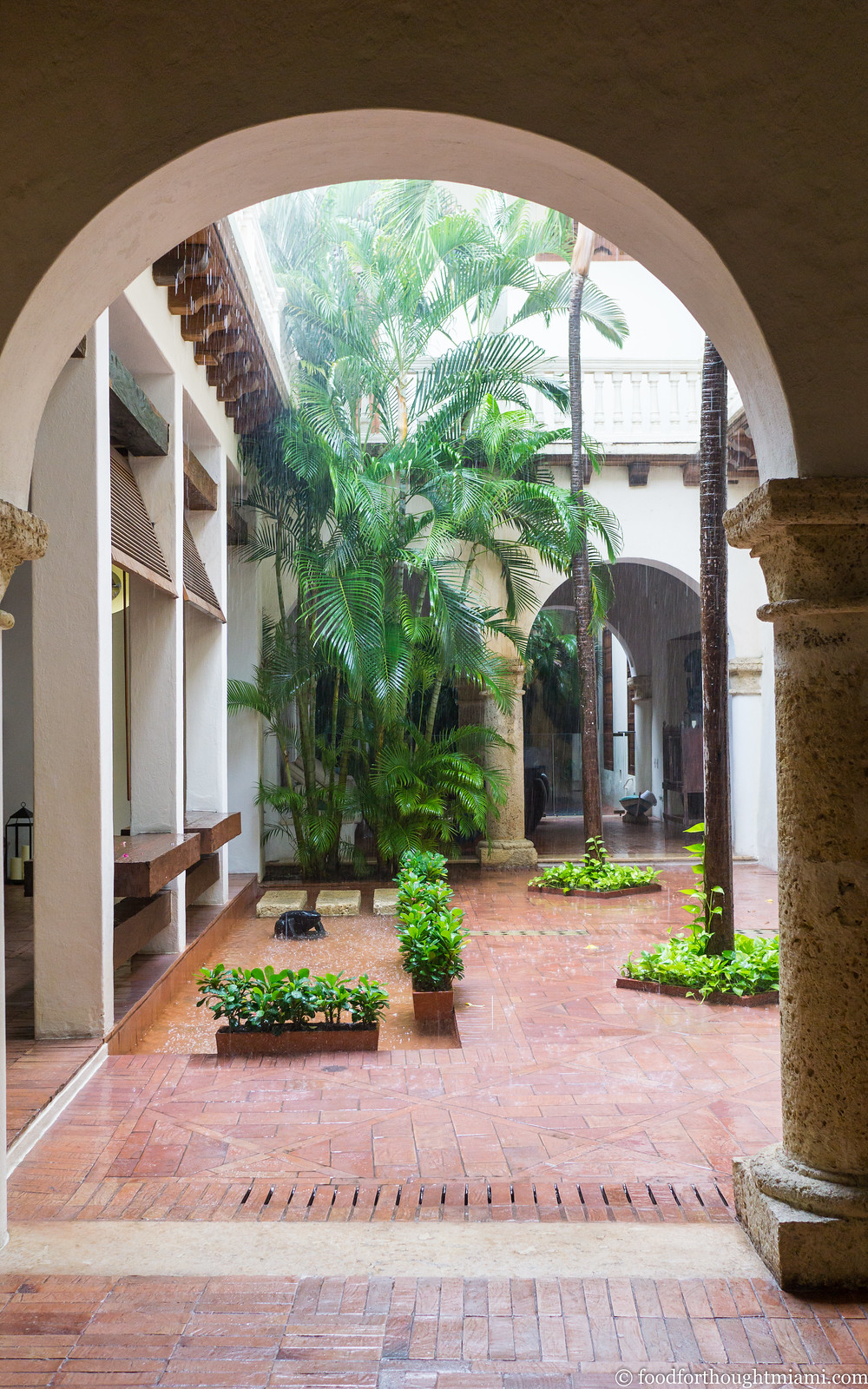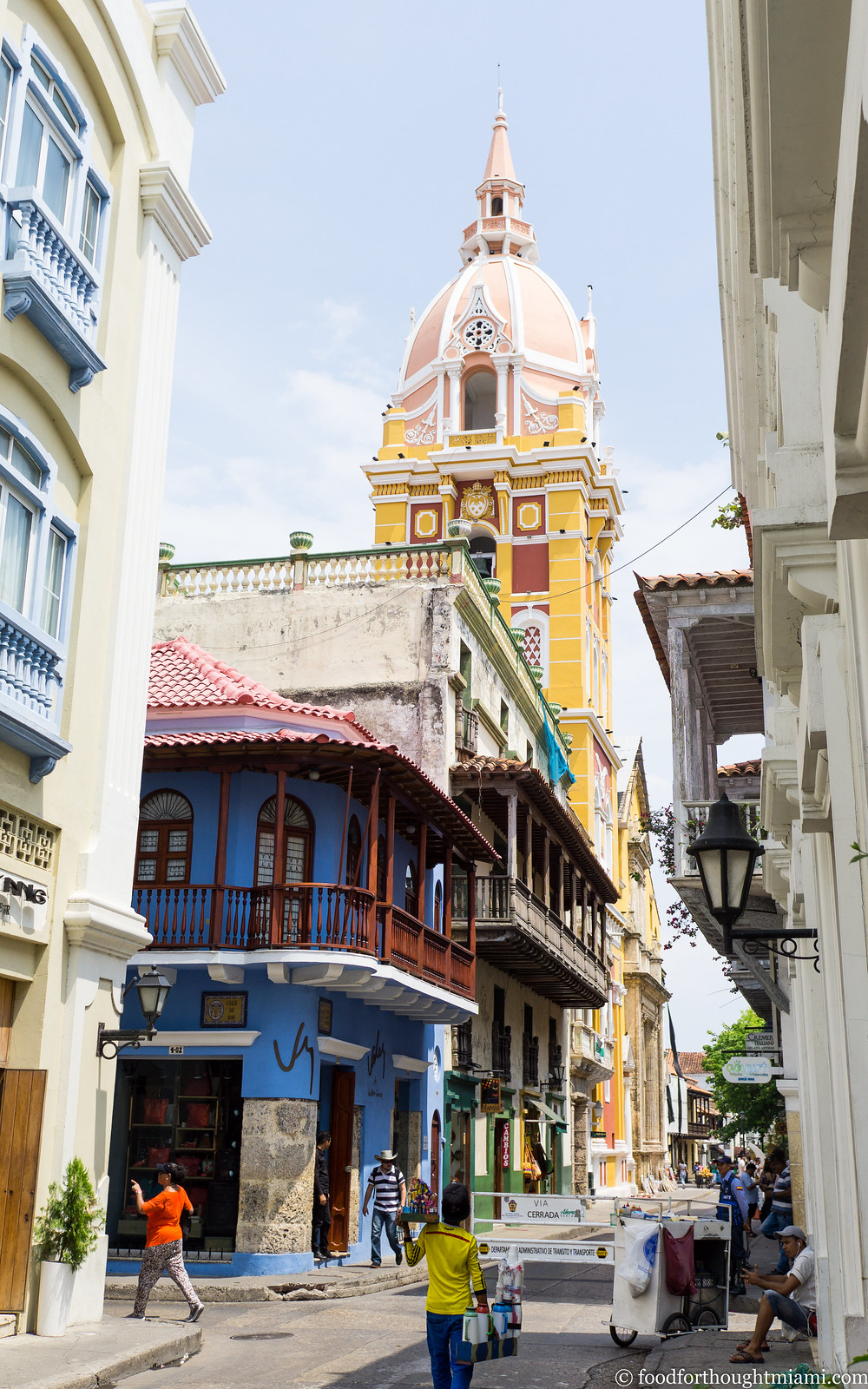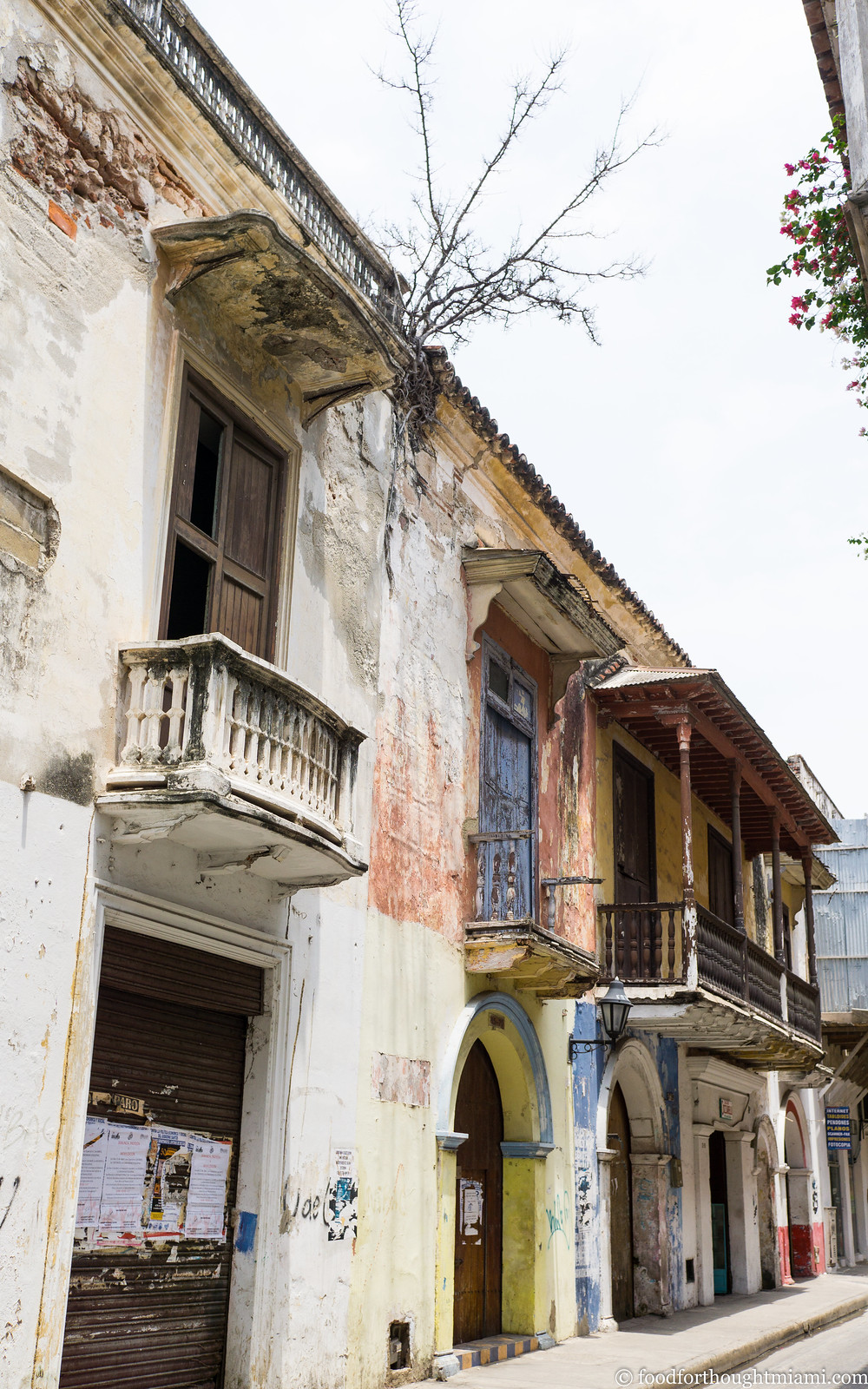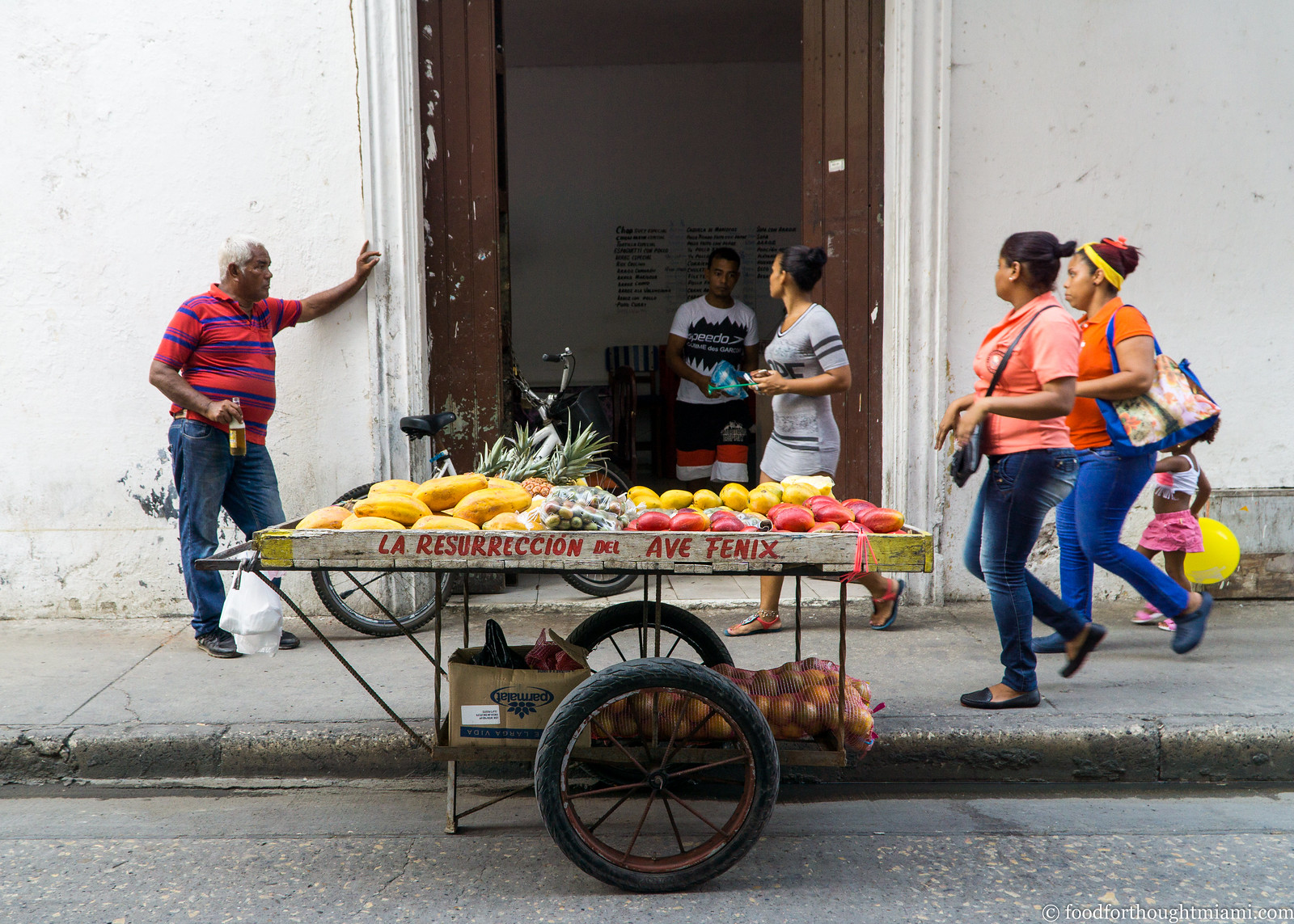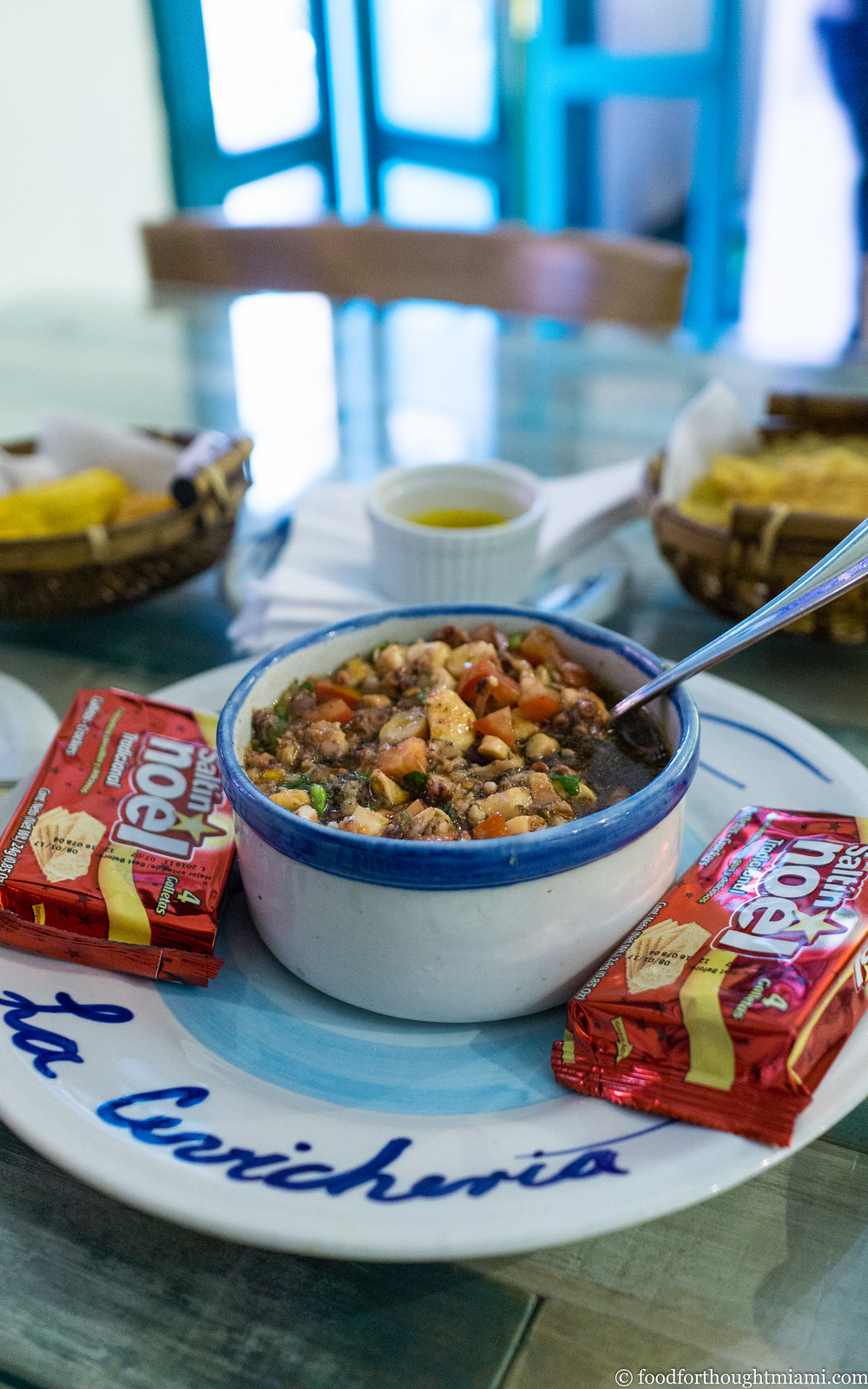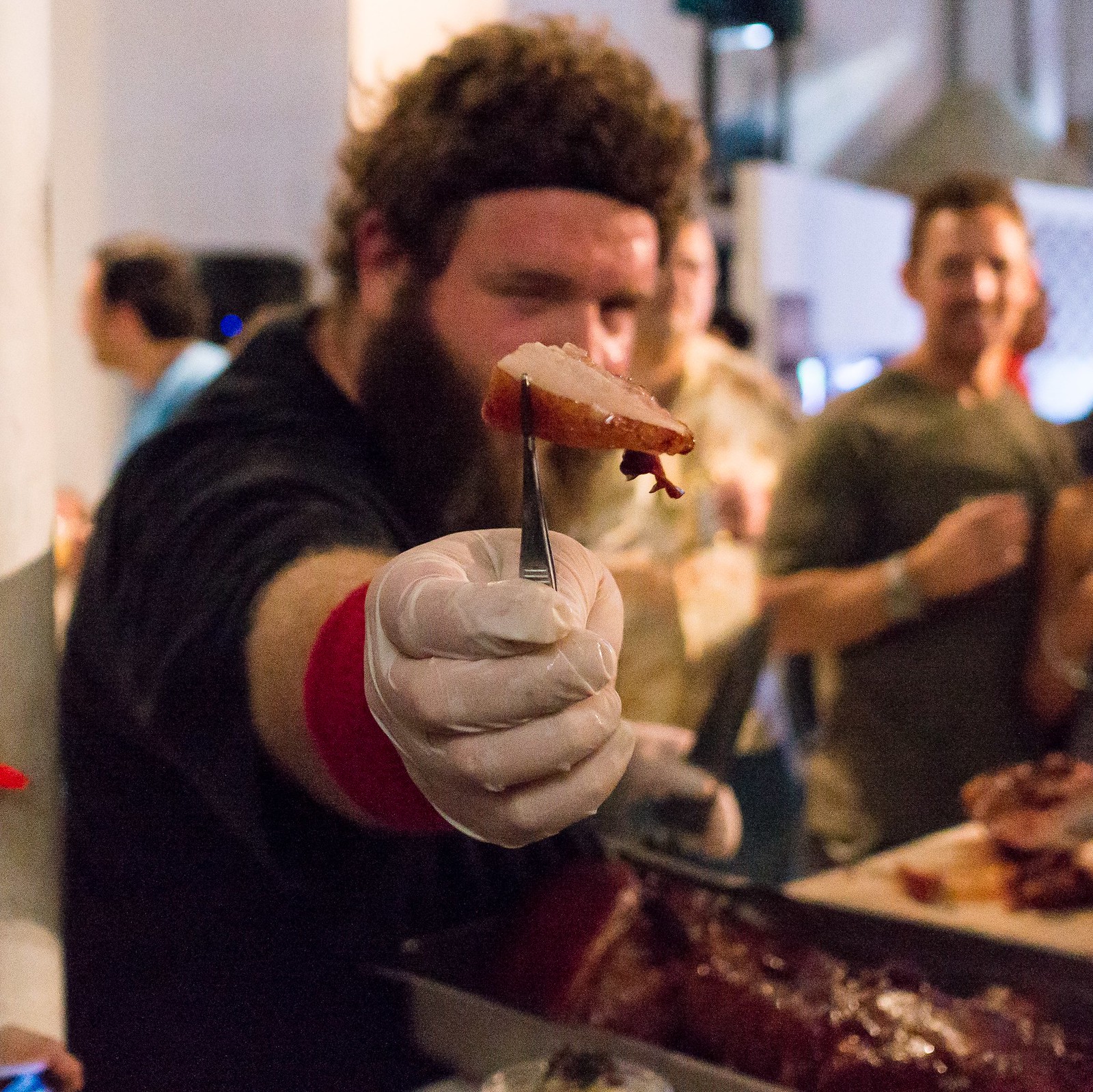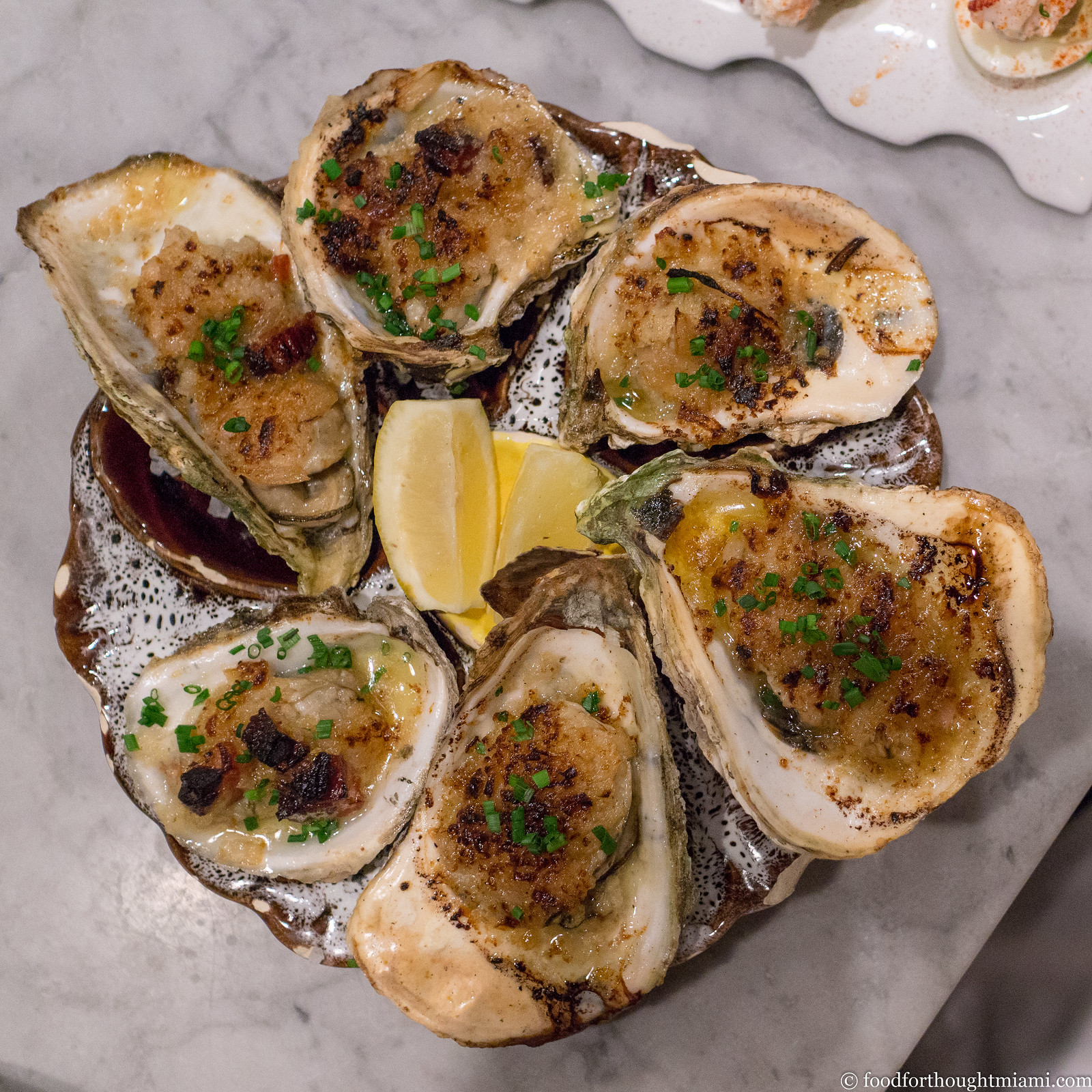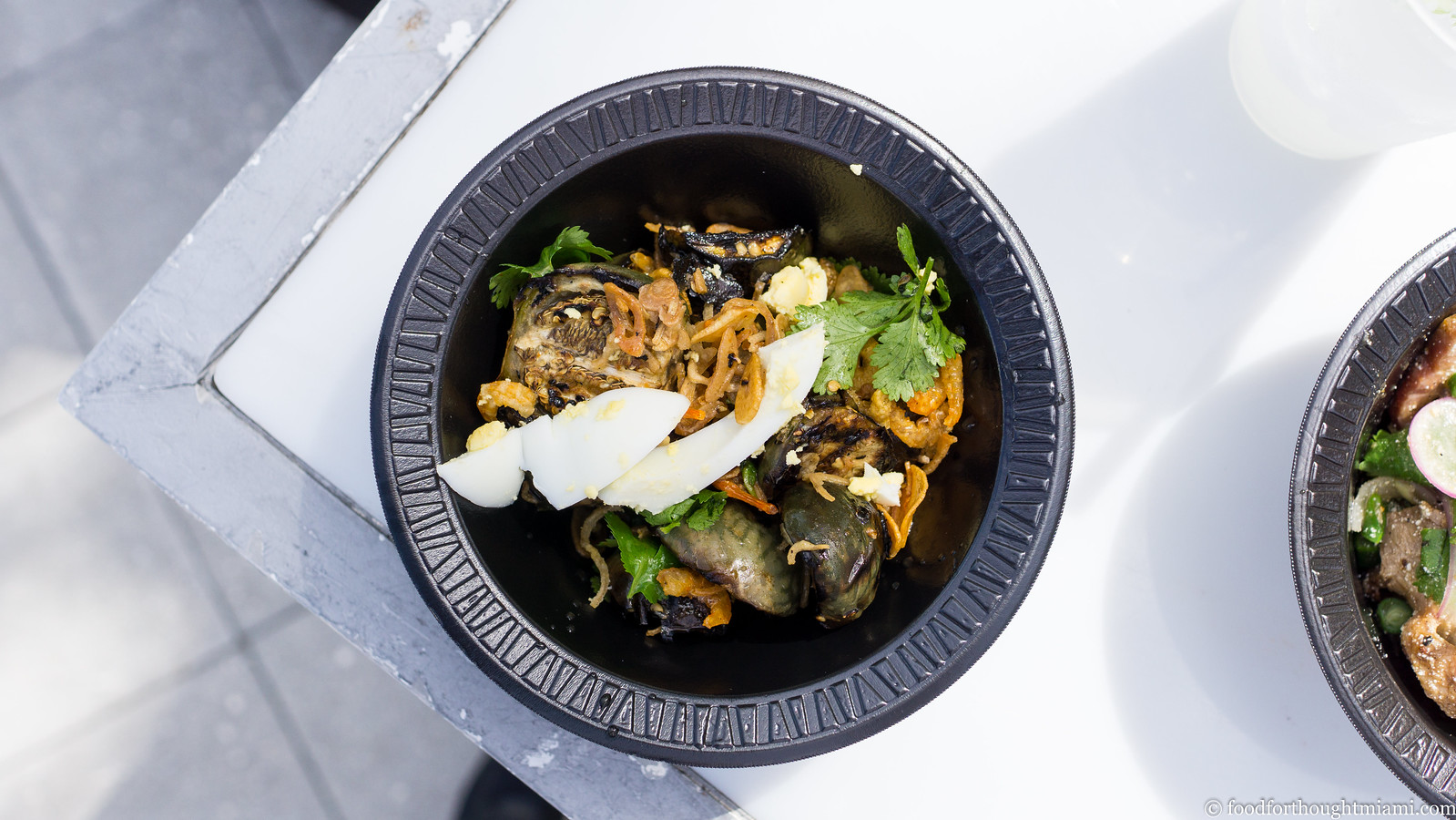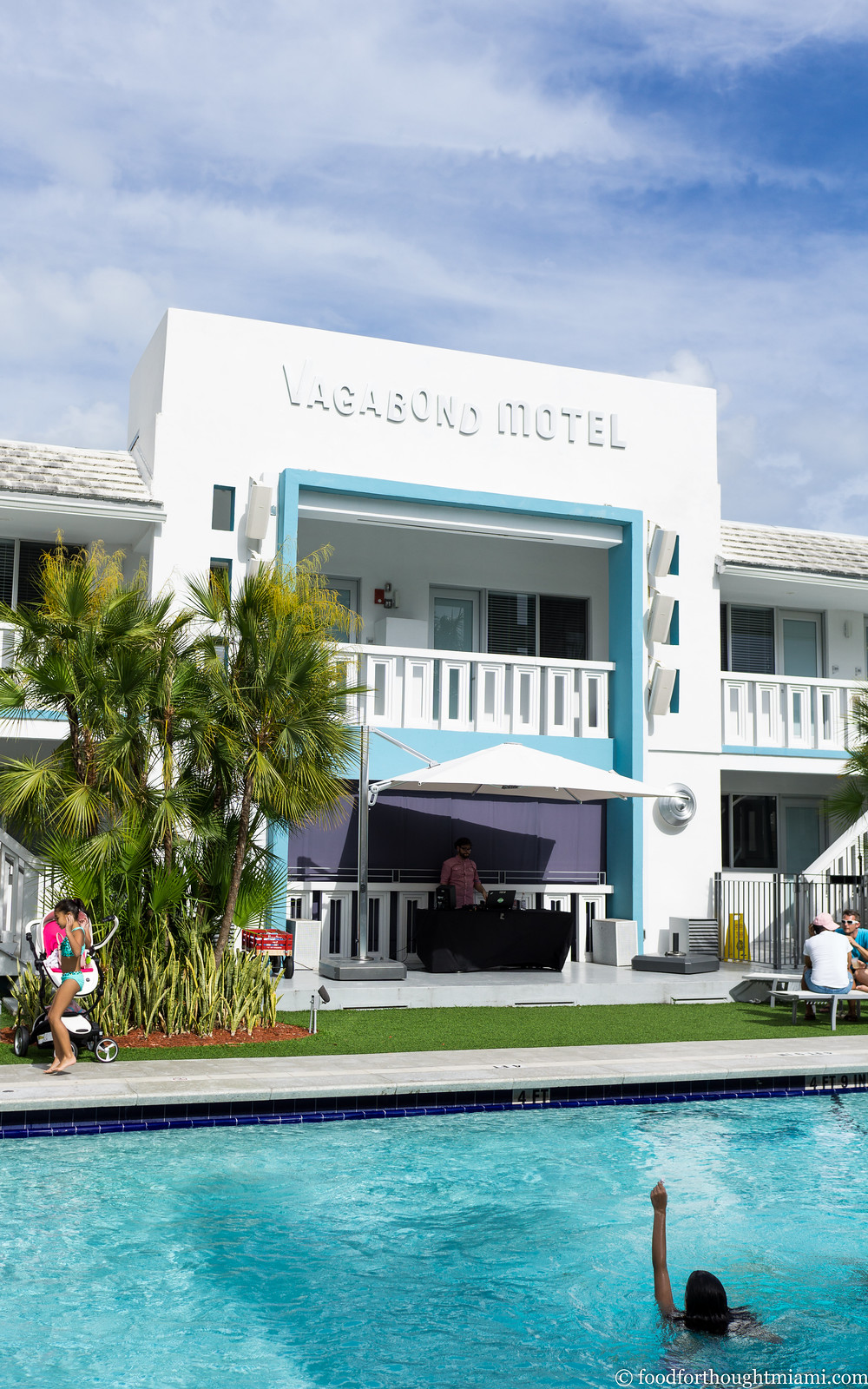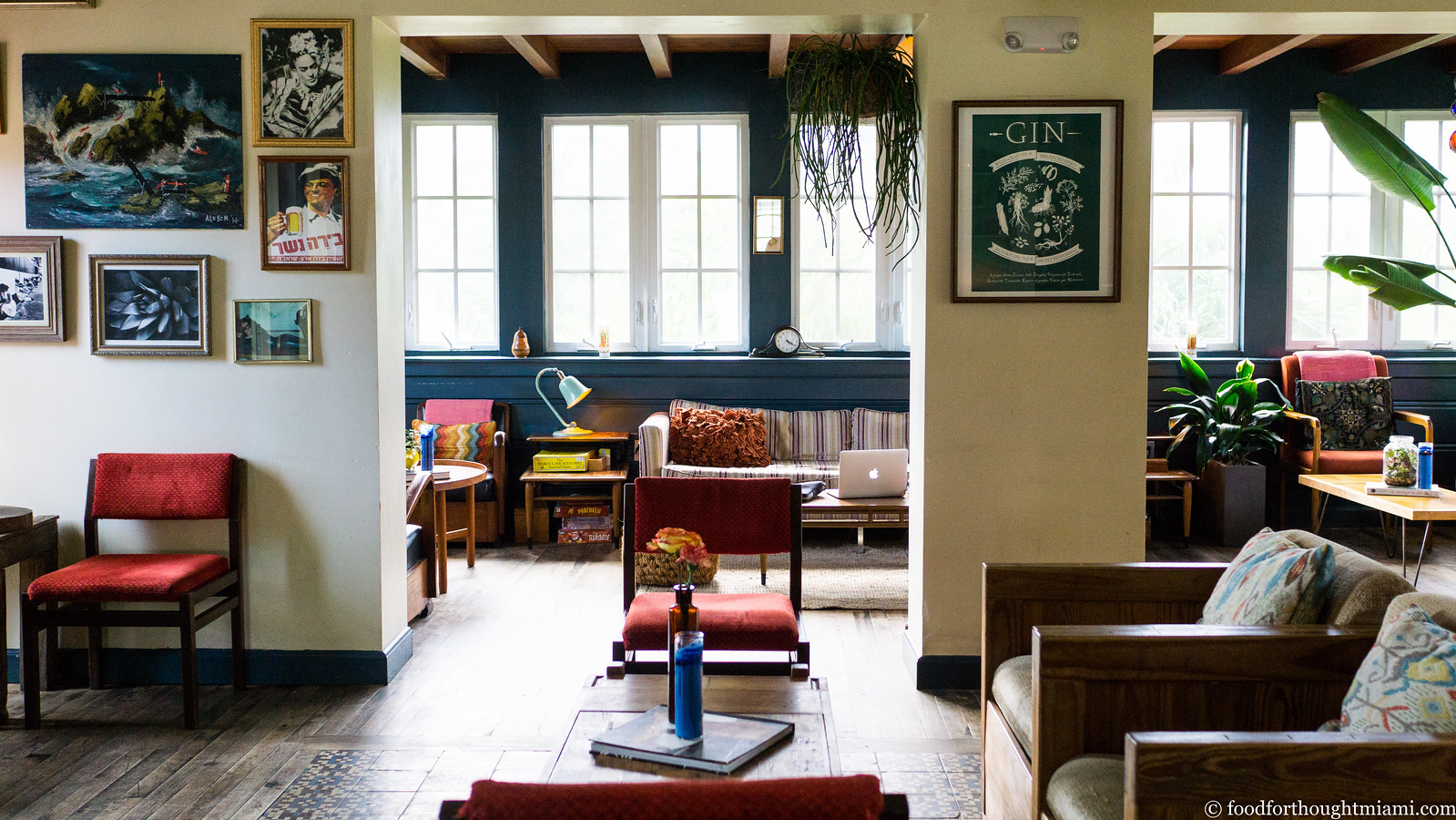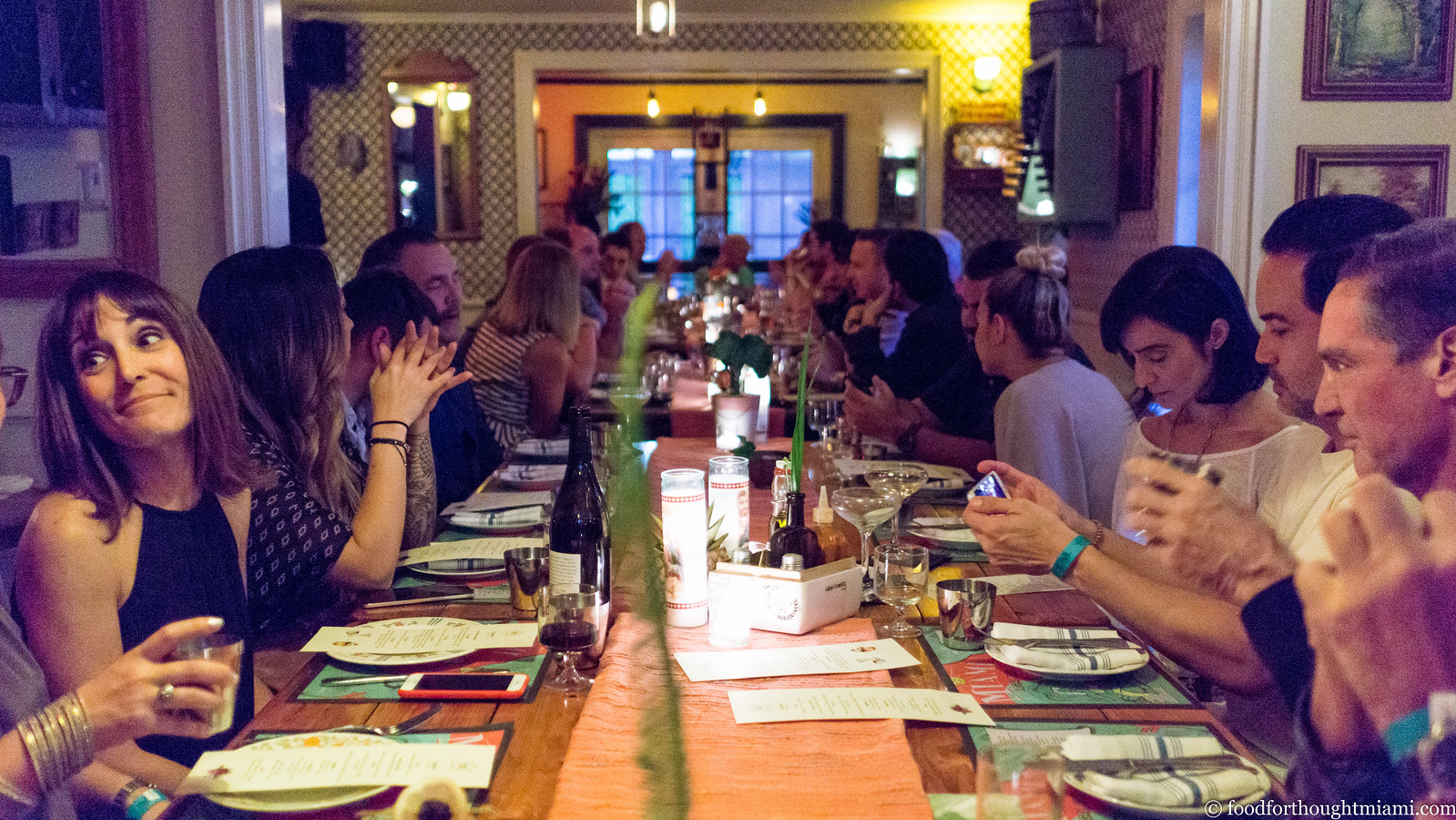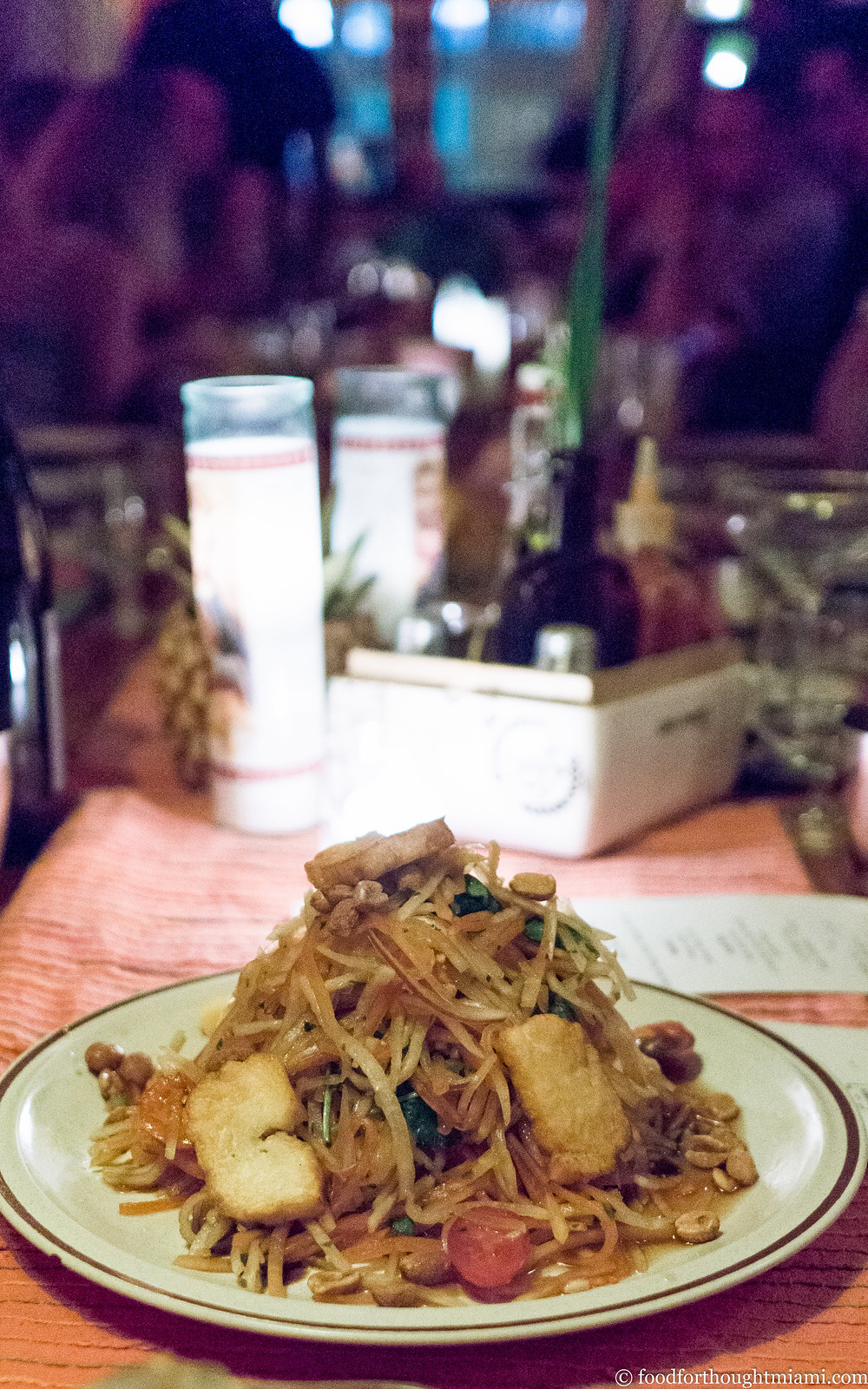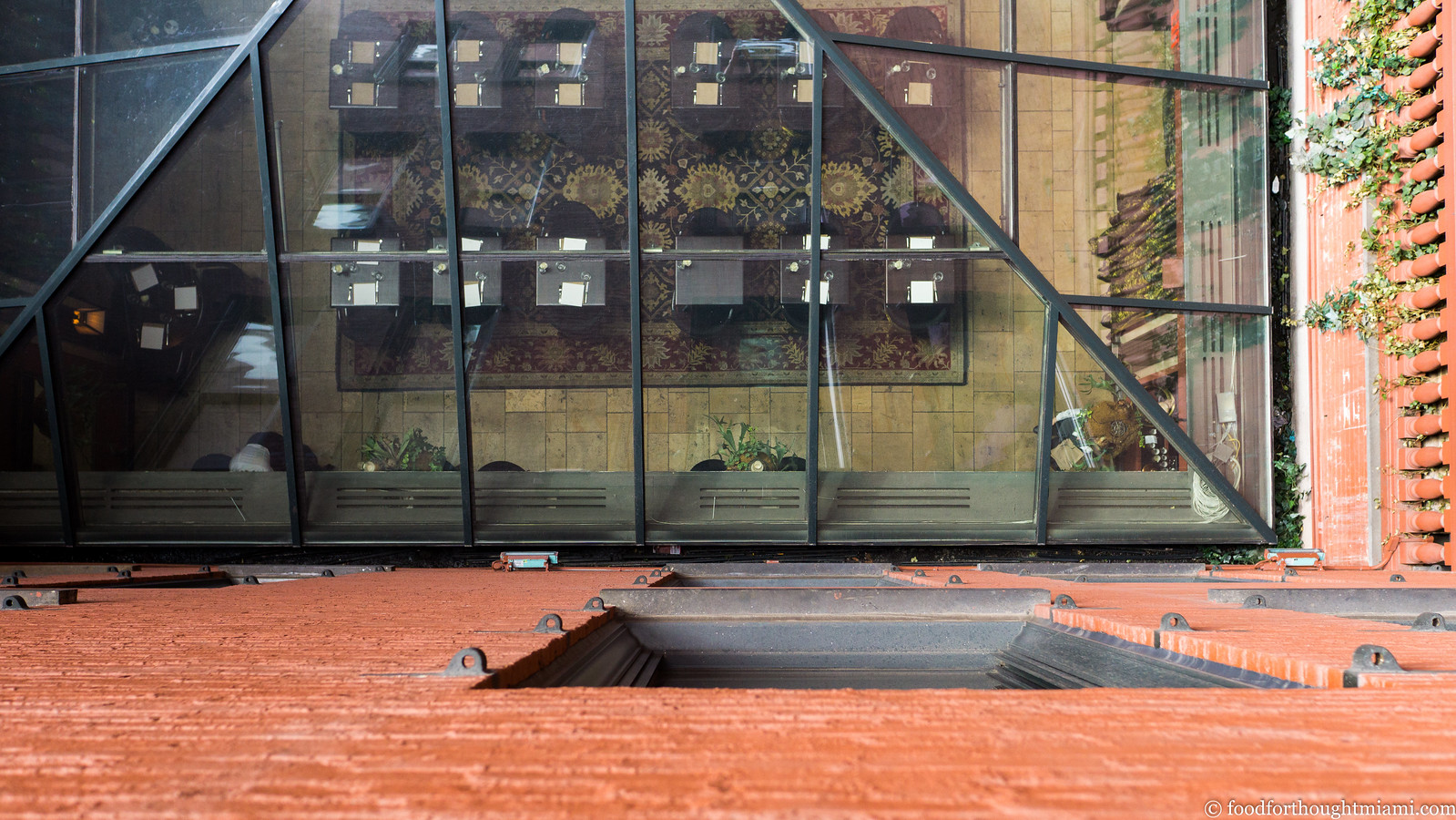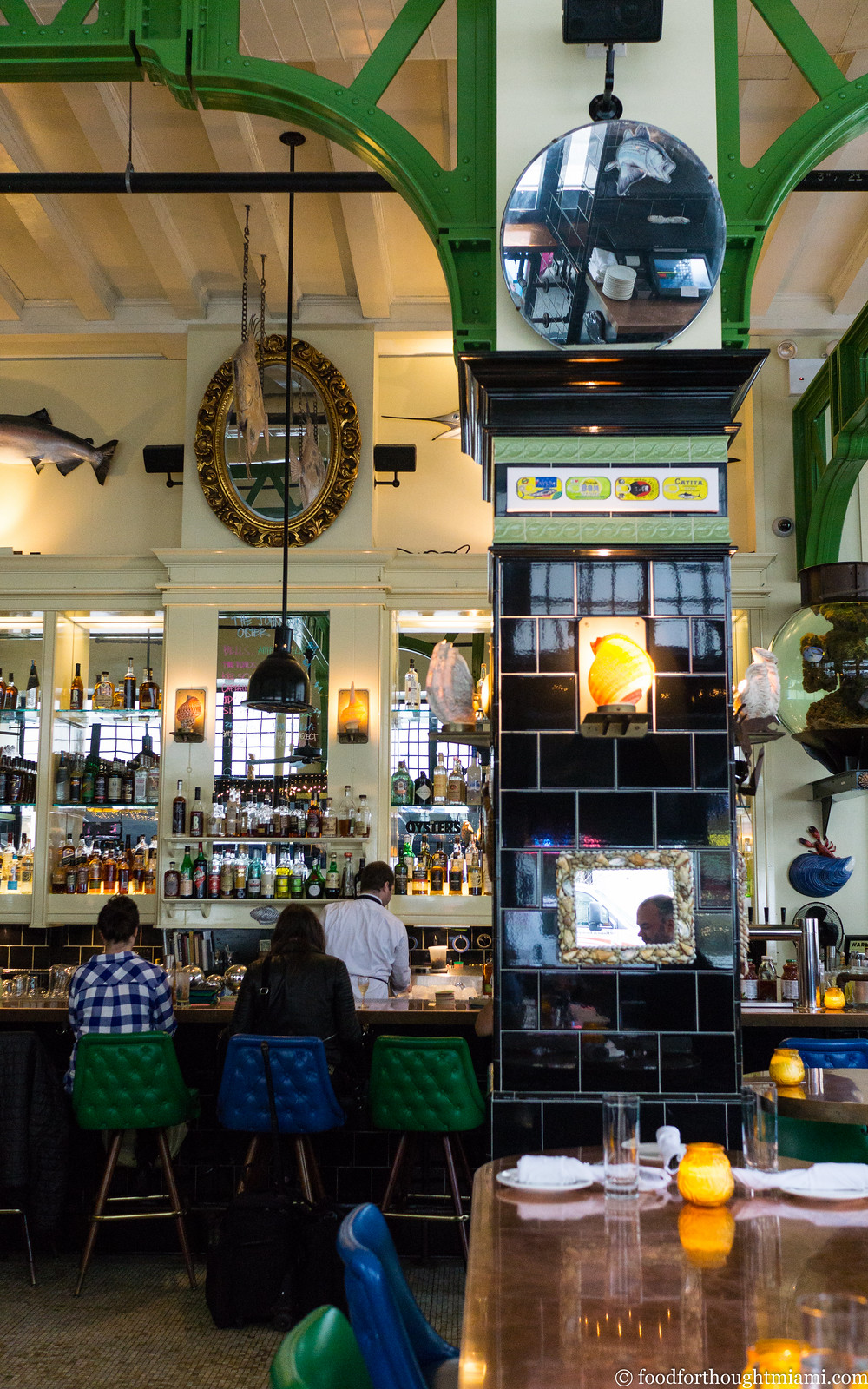Monday, May 16, 2016
first thoughts: Dragonfly Izakaya | Doral
Nearly a year ago, I posted some thoughts prompted by an Eater "Future Week" feature on the future of Miami dining. One of the things I predicted was that we would start seeing more independent restaurants in less trendy neighborhoods: places like Doral and Kendall, with lower rents, lots of potential customers, and not much competition other than chains. I'll confess that as a Miami Beach resident, I don't get out that way very often (honestly, I'd usually rather chew off one of my own limbs than drive on SR-836 West). But I braved the westward traffic last week to pay a visit to Dragonfly Izakaya, which opened last month.[1] The menu, which promised seafood from Tsukiji Market and robata-grilled "neck to tail" yakitori, had lots of the right words on it.
(You can see all my pictures in this Dragonfly Izakaya and Fish Market flickr set.)
It's a big venue, with a long and busy indoor/outdoor bar, seating for probably about 100, and an open kitchen with a robata grill and sushi bar. At the entrance is a small space that's slated for use as a fish market, though it's not yet up and running. Dragonfly's a good-looking room, which incorporates Japanese elements into the design – big sake barrels, wooden planks over the robata grill with the menu written in kanji – but not in a completely over-the-top Epcot kind of way.
We started at the bar, which during happy hour features $7 cocktails (including a nice pre-batched Old Fashioned) and several sub-$10 snacks, including a solid rendition of chicken karaage for $5 (that's not the entire portion – someone ate half of it before I got there). After the happy hour clock wound down, we shifted our way over to the sushi bar to sample through the rest of the menu.
We started with a round from the robata grill. The selection was not as broad as the menu promised: a "Neck-to-Tail Tasting Menu" listed several of the more exotic chicken bits, but some of my favorites were not yet available: bonjiri (chicken butt, from the end of the tailbone), seseri (neck, with lots of nice crispy skin) and tsukune (ground chicken meatballs, not sure why these would be so difficult to drum up). But we still did OK – pictured here and working clockwise from top left, eryngii (king oyster mushrooms) doused with butter and lemon, reba (chicken liver) swiped with tare, kawa (crisp, fatty chicken skin), and shio saba (salted mackerel). In the bottom left corner is one of my favorites, okonomiyaki, a sort of savory Japanese pancake studded with cabbage and seafood, then bedecked with Kewpie mayo, okonomi sauce, aonori, beni shoga (red pickled ginger), and wispy bonito flakes. Off-screen: tontoro, grilled pork cheek, served with a nutty sesame oil dipping sauce.
Of these, the highlights were the saba – it was powerfully salty, but the mackerel was tender, oily and fishy in a welcome way – and the okonimiyaki, a treat that's difficult to find here in Miami. The chicken items were good, but lacked that fantastic balance of juicy and crisp that I've experienced at yakitoris in Japan (though that's setting the bar pretty high).
We followed with a round of nigiri: here, from back to front and left to right, hamachi (yellowtail), saba (mackerel), hotate (scallop), ika (squid), ikura (salmon roe), and mirugai (geoduck). Off-screen: ama ebi (sweet shrimp), served in the customary fashion accompanied by their fried heads. Again, the offerings on hand were a bit shy of what was listed on the menu: no o-toro, uni or aji. no kinmedai or aji from Tsukiji market. But from what we sampled, the fish was of pretty good quality – I especially enjoyed the firm snap of the mirugai. The rice was a bit cold, stiff and underseasoned for my taste. The chef also sent over a tuna kobashi for us to sample, with ruby-hued cubes of fish given a riveting dash of kimchi spice and a savory hit of toasted sesame oil, served with slivered avocado and airy rice crackers for some DIY Japanese nachos.
(continued ...)
Tuesday, May 10, 2016
travelogue: a weekend of eating in Cartagena
Let me just betray my own ignorance immediately: when a good friend said he was getting married in Cartagena, I had absolutely no expectations of the city whatsoever. I was going for the wedding, and didn't really give much thought to what else the destination might hold. I booked a flight (direct out of Fort Lauderdale on JetBlue, and quite cheap, I should note) and started looking for a hotel near the church where the ceremony would be. And as I was searching on Google Maps, those little pictures of the spots you're clicking started popping up – and like a dummy, I realized, "Oh. This place actually looks really nice!"
The heart of Cartagena, the Old Town, is a walled city overlooking the Caribbean coast which has long been attractive to empire builders, tomb raiders, slave traders and pirates. Its winding streets are lined with Spanish colonial buildings and dotted with plazas and churches that date back to the 16th century. About half of those buildings are beautifully preserved; the other half are in a state of often remarkable decay, the kind of ruin porn that draws people to Cuba and Detroit. (With its designation as a UNESCO World Heritage Site, all the facades must be kept intact, though owners will often adapt and re-purpose the interiors).
It is about as picturesque a place as I have ever seen, yet still has the feel of a lived-in city and not some sort of Potemkin village. I was completely charmed by it.
We only had a weekend to explore, and a wedding to celebrate and related events to attend, but in between the festivities, here's what we did while in Cartagena:
(All the places we visited, and many more, are bookmarked in this Cartagena Google Map; you can also see all my pictures from around the city in this Cartagena, Colombia flickr set).
Our home base was the Hotel Quadrifolio, which was two blocks from the chapel in the heart of the Old Town. It's an eight-room boutique hotel in a beautifully restored old 17th century residence. As we checked in – while sitting in what was more of a living room than a lobby, and sipping on delightfully cold, slushy mojitos – we flipped through a picture book with before-and-after shots of the restoration. The transformation is remarkable.
The rooms are all situated around a central courtyard lined with arched passageways. A small indigo-tiled pool is nestled in back. Despite the tropical heat, the A/C in our room blasted at arctic levels, while the bathroom was open-air, with a small garden next to the shower. The decor throughout the property seamlessly merges the contemporary and the pre-Columbian. It was a glorious place.[1]
(There are more pictures of the hotel in this Hotel Quadrifolio flickr set.)
Hotel Quadrifolio
Calle del Cuartel (Cra. 5) No. 36-118, Cartagena de Indias, Colombia
+575 664 6053
We dropped our bags and went exploring the town, running into several other wedding attendees along the way. Though it's less than a mile from one side of the Old Town to the other, we would see something new every time we wandered the criss-crossing streets: an impeccably preserved church here, a beautiful but crumbling facade a block away.
And everywhere there were fruit vendors, with carts stacked with mangoes, papayas, coconuts, pineapples, and other more exotic specimens: maracuya (passionfruit), lulo, tomate de arbol, guava, granadilla and more.
Though we knew there would be food at a reception for the wedding guests that night, I was feeling peckish around mid-afternoon, and we stopped off for our first bite at La Cevicheria. We chose it primarily because it was open in mid-afternoon, and most places in town close at 3pm until dinner service (I get the sense that siesta is still taken pretty seriously here). I learned later that this is on the W.W.B.D. ("What Would Bourdain Do?") list for Cartagena, and I can see why.
Maybe I was especially hungry. Maybe the charm of the town makes everything taste better. Maybe it was their good A/C or their cold beer.[2] But this octopus ceviche, was, in the moment, one of the best ceviches I'd ever had. The octopus hit that satisfying equilibrium between tender and chewy, speckled with diced onions and peppers, all awash in a citrusy marinade stained dark brown by the octopus' pigment. You can also adjust the heat level yourself with a bottle of a really outstanding orange-hued hot sauce that our server was good enough to clue us in on.
La Cevicheria's ceviches are served with saltines for scooping, but for a worthwhile upgrade, get an order of their tostones, the plantains flattened wafer-thin and fried until shattering crisp.
(There are a few more pictures in this La Cevicheria flickr set.)
La Cevicheria
Calle Stuart 714, Cartagena de Indias, Colombia
+57 5 660 1492
(continued ...)
Friday, May 6, 2016
Duck Duck Goose! June 4 in Wynwood
I've repeatedly said here that P.I.G., the annual porcine production hosted by Chef Jeremiah Bullfrog, is one of my favorite Miami food events of the year. (Most recently last November for P.I.G. #6.) Well, now the P.I.G. is spreading its wings.
On June 4, Chef Jeremiah's gastroPod will play the host of "Duck Duck Goose." Whereas P.I.G. is a celebration of all things pig-related, this one is for the birds: a great lineup of guest chefs cooking locally pastured poultry, including ducks from Lake Meadows Farm. Expect a flock of ducks, hopefully some geese, and lots of live fire cooking over embers. So what's with all the birds? Says Jeremiah: "After seven years of cooking pig, we thought it might be sustainable to switch up farm animals."
The chefs include some P.I.G. regulars and some new additions: Brad Kilgore of Alter, Will Crandall of Izzy's Fish and Oyster, James Strine of Café Boulud, Patrick Rebholz of Quality Meats, Cake from Cake Thai Kitchen, Gabriel Ask from the Faena, Aaron Brooks of Edge Steak, Steve Santana of Taquiza, Brian Mullins of Ms. Cheezious, Babe Froman Fine Sausages, and John Lermayer, mixologist from Sweet Liberty.
The deets:
When: June 4, 2016 from 5pm-9pm
Where: gastroPod, 168 NW 26th Street, Miami (Wynwood)
Tickets: $59 - get 'em through Eventbrite
It's the same basic idea - get some great chefs together to all cook good things with tasty animals - but Jeremiah says Duck Duck Goose will have a somewhat different feel from the P.I.G. fests: "PIG is more of a Rock n Roll and Whiskey vibe. With DDG, the aim is towards Champagne and Bossa Nova." So imagine something like this:
But with a duck, and a different soundtrack. Sounds good to me.
Monday, April 25, 2016
best thing i ate last week: oysters frank at Mignonette
There are so many new places that have opened in Miami of late; and yet sometimes – often – I just want to go back to an old favorite. Mignonette, Chef Daniel Serfer's oyster bar in Edgewater, has become one of those old favorites: a place where I might very well order the same thing every time I go, and always leave happy.
But here's something new: "Oysters Frank," named after chef de cuisine Bobby Frank. Topped with smoked bacon, manchego cheese, a goodly amount of butter and a dash of sherry, then broiled, these will give Mignonette's excellent rendition of Oysters Rockefeller a run for their money. Round out the rest of the meal with their very good lobster deviled eggs, one of my favorite salads, and a fancy seafood tower, and I bet you'll leave happy too.
Monday, April 18, 2016
best thing i ate last week: grilled eggplant salad at Vagabond Backyard Cookout
I'm a big fan of all the good things happening in Miami's "MiMo District" along Biscayne Boulevard, anchored of late by the refurbished Vagabond Motel. Yes, it's partly because it's a straight shot from home across 79th Street Causeway for me, but it's also because the neighborhood has some old 1950's Miami feel, which many of its new inhabitants are looking to preserve in some fashion while still bringing new styles and flavors.
So I was particularly happy to see Chef Alex Chang, who runs the Vagabond Restaurant, team up with Chef Phuket Thongsodchaveonde of Cake Thai Kitchen up the street for a Backyard Cookout around the Vagabond pool. Two of my favorite spots, at one event? Sold.
Together they did a Thai-style BBQ that included grilled corn slathered with coconut cream and palm sugar, a fragrantly spicy Isaan style pork shoulder larb dusted with roasted rice powder, BBQ chicken with papaya salad and sticky rice, grilled whole fish cooked in banana leaves, and for dessert, an ice cream sandwich tucked into a hot dog roll topped with toasted peanuts and fish sauce caramel (a LOT better than it might sound).
(You can see all my pictures on the back end of this Vagabond Restaurant flickr set).
But my favorite dish was this eggplant salad. Little golf ball sized Thai eggplants were halved and grilled so their edges blackened and their insides had just started to go soft and custardy. They were doused in a key lime vinaigrette packing sour, sweet, and just a little heat. But the clincher was the toppings: those crispy shallots, those chewy, funky dried shrimp, like little flavor bombs that keep you digging in for another bite.
It was the best thing I ate last week, and a really fun way to spend a Sunday afternoon.
Monday, April 11, 2016
Cobaya #61 at 27 with Chef Jimmy Lebron
This is another one we've been trying to make happen for quite some time. Finally, all the right pieces fell into place and we had a date locked in for a Cobaya dinner at 27 Restaurant, the sibling to the wonderful Broken Shaker bar at the Freehand Hotel on Miami Beach.
27 is one of my favorite places on the Beach, foregoing the glitz and glam that's becoming ever-present for a cozy, homey atmosphere with the feel of an abuela's casita – if your abuela was also Israeli and had a thing for craft cocktails. The regular menu at 27 does a remarkable job of capturing that vibe as well: it's fresh and unfussy, and though visitors may puzzle over why arepas, shakshuka and kimchi fried rice are all coming out of the same kitchen, it somehow tastes and feels more like Miami than just about any other restaurant in town.
The Freehand actually played host to Cobaya #29 with Brandon Baltzley a few years ago, but this one would be an in-house affair. So Chef Jimmy Lebron was in charge, and we invited him to craft his own menu for forty guinea pigs. What he came up with was simultaneously unique and fully in the spirit of the place at the same time.
(You can see all my pictures in this Cobaya #61 at 27 Restaurant flickr set).
We gathered at 27's upstairs bar and sampled the cocktails as the group assembled, then made our way back downstairs and settled in at a few communal tables stretched across the restaurant's multiple rooms. All the courses were served family style, and it had more of the feel of a dinner party than a restaurant meal.
After starting us off with some malawach, a Yemenite fry-bread, served with a really delicious uni butter dusted with za'atar spice, Chef Lebron sent out a round of "Fresh from Florida" seafood courses: Peruvian-inspired steamed middleneck clams swimming in a tangy leche de tigre, with salsa criolla and cancha corn; a crudo of fresh, sweet mangrove snapper, paired with ripe local loquats, tangerine juice, and a surprising – and really magical – dash of Chartreuse; a salad of green papaya from my CSA farmer, Little River Cooperative, with Thai chiles and halloumi cheese, which was one of the best versions I've ever had; and whole black belly rose fish[1] done in an escabeche style, fried whole and topped with pickled vegetables.
(continued ...)
Wednesday, April 6, 2016
travelogue: a weekend of eating in New York City
Whenever we visit New York City, there's a constant tug of war between the new and the familiar. We're typically only in the city for a couple days at a time, and the list of places I'd like to try runs into the hundreds; but there are also the places to which we like to return, rituals that provide reward and reassurance through repetition.
When we can do so for a not-astronomical rate, we like to stay at The NoMad, which aside from having a great restaurant and a great bar,[1] also has posh but comfortable rooms, great service, and a central location (28th and Broadway) from which both Lower Manhattan and the heart of Midtown are within range of a long walk. That's the view from our room down into the dining room at the top of this post; the view at ground level is equally nice.
(You can see all my pictures from The NoMad in this NoMad flickr set).
And when we stay at the NoMad, and arrive mid-afternoon, we like to drop our bags and get a snack at the John Dory Oyster Bar, April Bloomfield's seafood emporium one block up. Since it's between services, there's only a limited menu, which is fine: some oysters, a carta di musica, and a couple other fishy things (this time, a smoked char pâté with parker house rolls and half of a poached lobster) tide us over in very happy fashion until dinner.[2]
(You can see all my pictures from the John Dory in this John Dory Oyster Bar flickr set).
The John Dory Oyster Bar
1196 Broadway @ 29th Street, New York, NY
212.792.9000
For dinner, though, something new (for us anyway): Sushi Ko, an 11-seat, omakase only sushi den on the Lower East Side. Part of the draw for me was that the itamae, John Daley, was a mentee of Masato Shimizu, the chef of 15 East where we'd had an excellent meal a couple years ago.[3] After working at 15 East, Daley went to Japan and worked for Chef Masa's mentor, Rikio Kugo of Sukeroku. At his own place – which he runs pretty much as a solo operation, which just one server pouring drinks and handling the check – he serves a $150 procession of about a dozen and a half rounds of nigiri.[4]
His rice I thought was very good: faintly warmer than body temperature, each grain perfectly distinct without falling apart, seasoned just enough to enhance but not overwhelm the flavor of the rice itself. Though Daley has been characterized as something of a renegade, he is not the type that festoons his neta with a blizzard of different garnishes. Some were smoked or quickly seared, but otherwise his fish was touched only with a delicate swipe of wasabi, a brush of soy sauce or a sprinkle of salt, and maybe a touch of citrus juice or zest. I did find he was a bit heavy-handed on the salt, but this was something I could have remedied had I recognized it earlier: early in the meal, he invited each of us to ask him to calibrate his seasoning.
I liked how his selection of fish had themes: kanpachi fresh in one instance and lightly smoked in another; shima aji and aji in procession; three different kinds of uni (California uni, smoked, as nigiri; Maine uni in a maki; Japanese uni as gunkan maki) over the course of the meal; though I wished one of those themes hadn't been (endangered) wild caught Atlantic bluefin tuna.[5]
New York Sushi Ko
91 Clinton Street, New York, NY
(continued ...)
Subscribe to:
Posts (Atom)

